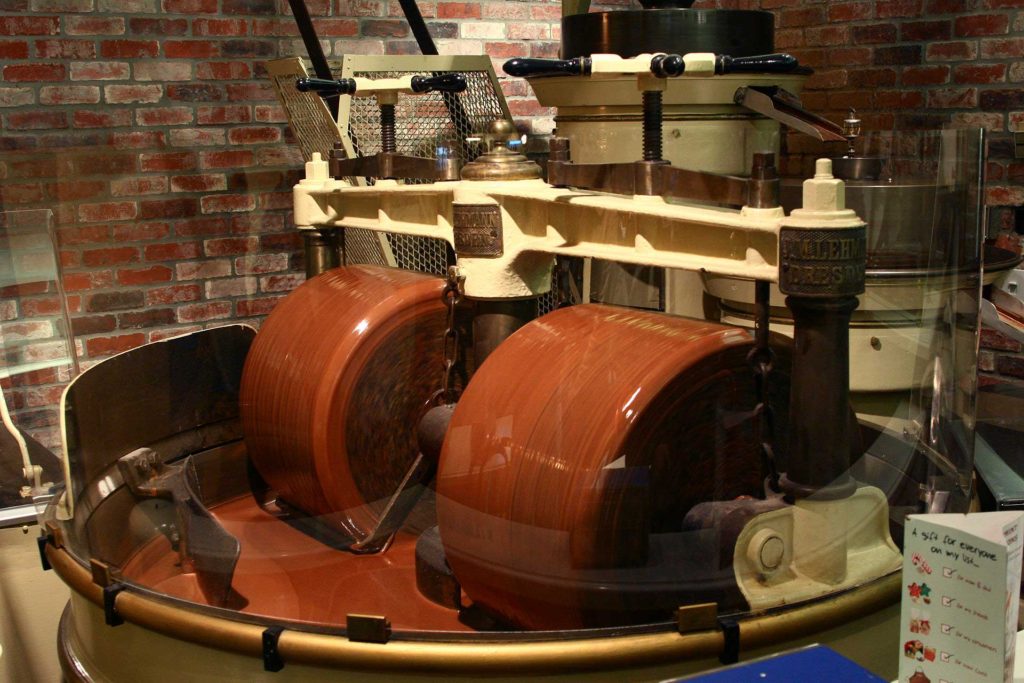How technology helped to make Chocolate?

The 1800’s saw rapid increases in chocolate consumption. As Mintz notes, during this time, chocolate went from being a luxury a necessity within the everyday person’s life [1]. One important drive behind this alteration was the technology developed during that point . This blog post aims for instance that inventions within the 1800’s by people like Joseph Fry and Henri Nestlé were crucial to the chocolate’s rapid climb in popularity by making it cheaper, widening the contexts during which chocolate are often consumed or used, and improving its taste. Given the claims in Mintz about the importance of chocolate and therefore the sugar trade the event of capitalism, this is able to also indicate that such innovations were key to the formation of capitalism.
Innovations in Form/Usage
In 1828, van Houten invented the press , which provided a cheap thanks to separate the chocolate from the cocoa butter. The press had two important effects. First, it lowered production costs for chocolate such it became cheaper to the mass market. Secondly, because chocolate might be extracted, it became possible to mold chocolate into different forms, introduction the new use for chocolate as a confectionery ingredient [2]. These lower costs and new use cases increased the recognition of chocolate, signifying the importance of van Houten’s press .
Another innovation came in 1947, when Joseph Fry managed to craft the primary chocolate candy. Chocolate was made portable and at easy access allowing people to consume it more often. Though not strictly within the 1800’s, an example of how this boosted chocolate’s popularity worldwide is war II, where American troops often carried “military chocolate” as a source of energy [4]. Thus, not only did innovations affect the food make-up of chocolate, but also in its form and the way it had been consumed, helping chocolate become more popular among labor citizens.
New Chocolate Varieties
As a fanatical fan of chocolate , subsequent innovation is extremely near and dear to me, also as being a crucial to the present blog’s argument. In 1876, Daniel Peter and Henri Nestlé found how to dehydrate milk to make dry milk . Using this innovation, Peter and Nestlé were ready to invented chocolate . Today, chocolate is that the most generally consumed sort of chocolate, making up about 51% of consumption within the us . Thus, it’s clear to ascertain how great an impression this creation had on chocolate consumption worldwide.
Innovations in Taste
Finally, we’ve Joseph Lindt, who the chocolate company Lindt is known as after. In 1879, Lindt developed the conching process. Heating and mixing the chocolate’s ingredients is involved in conching (e.g. chocolate , cocoa butter, sugar) for hours, fully developing the chocolate’s taste and texture [6]. Thus, apart from changes in form and variety, the taste and texture of the chocolate were also being innovated on, improving the experience of eating chocolate, thereby increasing popularity.
Chocolate, Sugar, and Capitalism
So far, we’ve shown the integral role that these inventions have played in chocolate’s rising popularity. With this growth in popularity comes the potential for giant profits surely participants of the chocolate trade. especially , these participants were the owners of plantations in Africa and therefore the West Indies , also because the middle men within the growing shipping industry. These businessmen also spent much of their time lobbying government to enact favourable policies for his or her corporations [1]. The profitability of those roles incentivized more people to require them on, and created many of the capitalist practices we see in today’s society (e.g. large multinational corporations, lobbying). Indeed, Mintz notes similarities between work being done on sugar and cacao plantations as those being administered in factories during the economic revolution. These inventions made chocolate more popular, but in doing so, they expanded the potential for profit, incentivizing practices and organizational structures typical for a capitalist society.
Addressing the choice View
Those who afflict this blog post’s thesis would likely argue that chocolate would have still have had the massive impact it did on capitalism without these technological advancements. that’s difficult to work out with certainty whether or not they did or not, since we cannot return in time and test what the planet would’ve been like without these inventions. That said, before any of those inventions, chocolate was consumed primarily as a drink and consumed far less often than coffee or tea, due to its very high price, this means, that chocolate’s popularity won’t have grown because it did without these innovations lowering the assembly price and moving it into the food category rather than the drink category, where it might have had to compete with coffee and tea.
Final Thoughts
To conclude, the innovations and enhancements in technology within the 1800’s were instrumental to chocolate’s rise in popularity during this point period. These advancements made chocolate taste better, more useful during a sort of contexts, and more convenient to consume. Furthermore, by contributing heavily to the increase of chocolate, these inventions also contributed to the increase of capitalism. As an afterthought, note that today, technological innovation may be a large driver for several aspects of the economy. Thus, it’s interesting to ascertain that this also the case 204 years ago.
